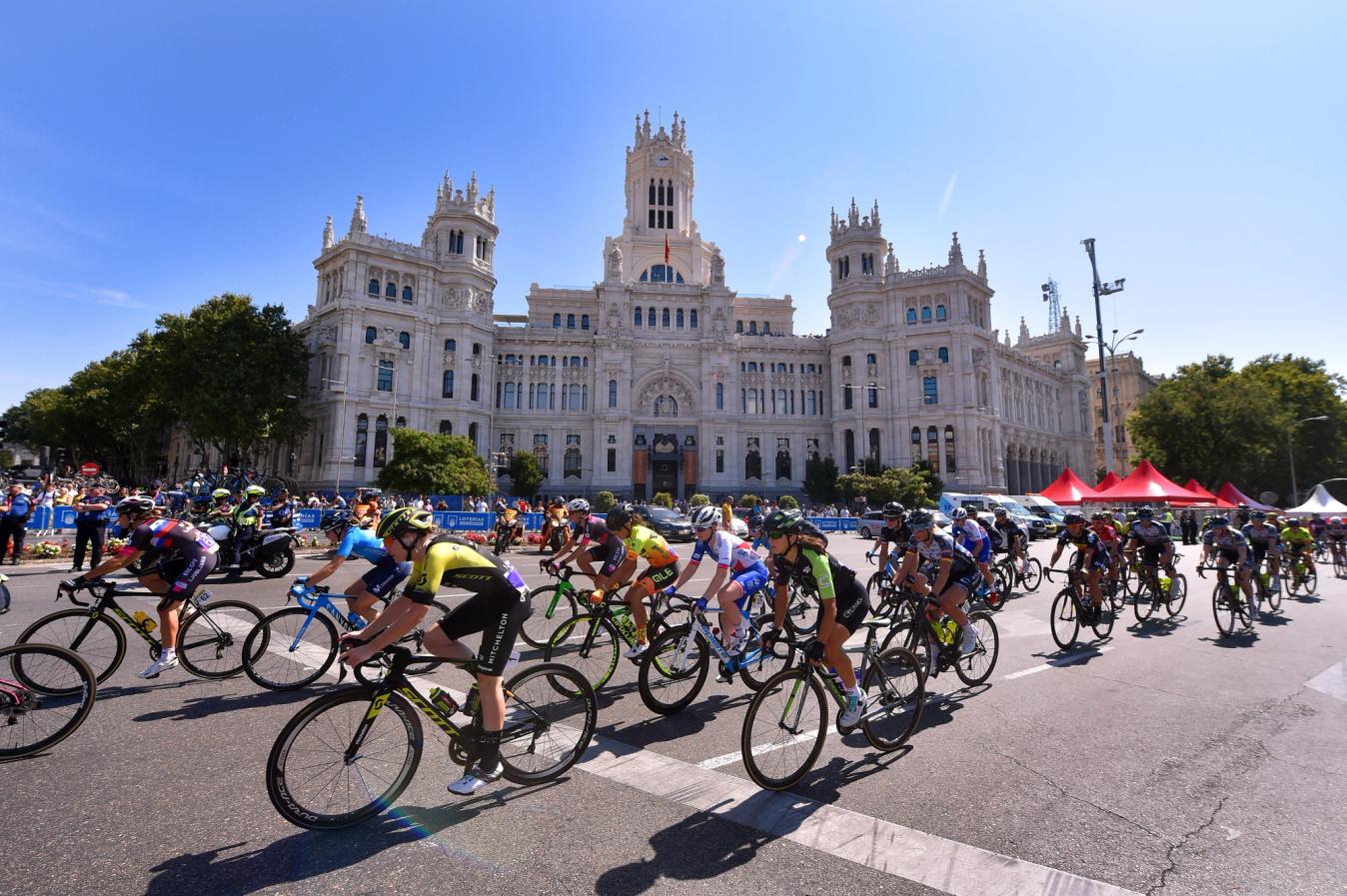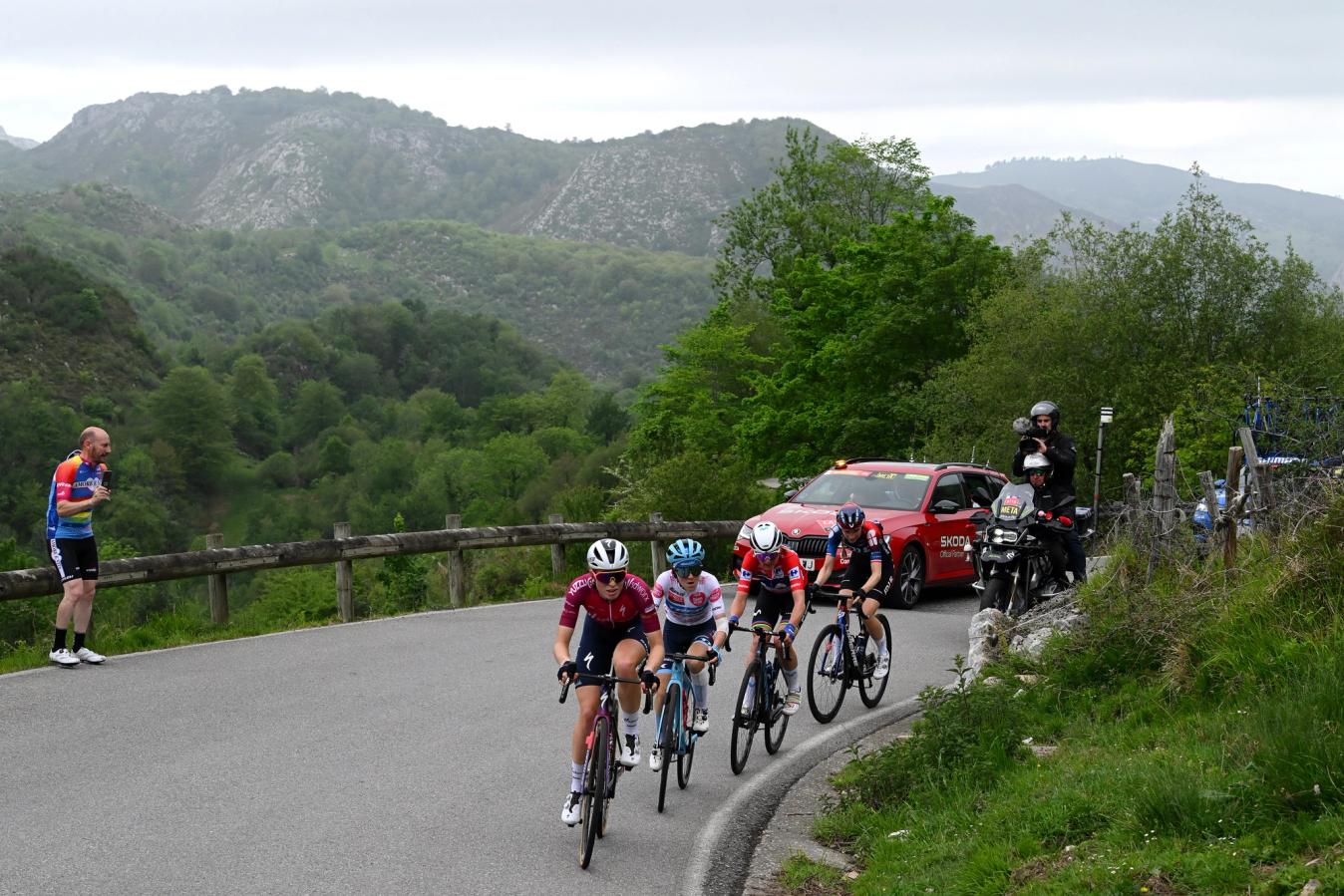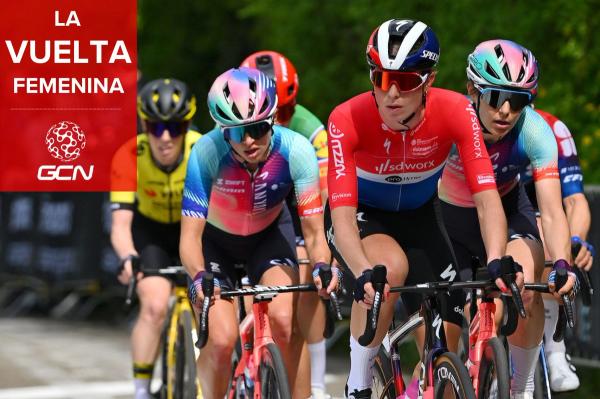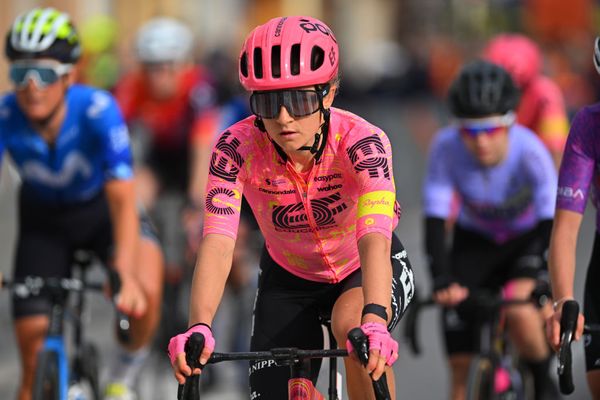A brief history of the Vuelta Femenina
The Vuelta Femenina has joined the Giro d’Italia Women and Tour de France Femmes avec Zwift in the Grand Tour stable, but it wasn’t always this way
George Poole
Junior Writer
© Getty Images
Annemiek van Vleuten won last year's Vuelta Femenina, but it was no easy victory
The Vuelta Femenina will begin in Valencia on Sunday 28 April, taking in eight stages between there and a summit finish to conclude the race in Valdesquí on 5 May. It will be the first Grand Tour of the cycling season and, as such, will pit some of the world’s best riders against each other, from Demi Vollering (SD Worx-Protime) and Kasia Niewiadoma (Canyon-SRAM) to Elisa Longo Borghini and Gaia Realini (both Lidl-Trek).
As the roll call suggests, the Vuelta Femenina is the stomping ground for the Women’s WorldTour elites, and, with three summit finishes on offer, should produce some of the most thrilling racing of the season.
However, it wasn’t always this way. The Vuelta Femenina arguably only elevated to Grand Tour status last season. Prior to this, it was known by a couple of previous monikers - La Madrid Challenge by La Vuelta and the Ceratizit Challenge by La Vuelta - and followed shorter formats, starting out as a one-day race and steadily growing from there.
Read more: 2024 Vuelta Femenina route revealed
When the Tour de France Femmes avec Zwift was successfully revived in the summer of 2022, joining the existing Giro d’Italia Women, the Vuelta found itself struggling for an identity. Although seen as an enjoyable affair, it was criticised for not being difficult enough to be called a Grand Tour and painted as the missing link in the mirroring of the three men’s Grand Tours.
Fast forward two years and the cycling world is hotly anticipating what has now been accepted as the first Grand Tour of the season, welcoming in a period that will see the world’s best climbers battle it out for the respective red, pink and yellow jerseys at the Vuelta Femenina, Giro d’Italia Women and Tour de France Femmes.
Read more: La Vuelta Femenina 2024 – essential race preview
Here is how the Vuelta Femenina added itself to the Grand Tour stable.
2015-2017: A one-day aperitif to the men’s Vuelta a España
At the beginning of its lineage, the Vuelta Femenina was a one-day race tacked onto the end of the men’s Vuelta a España and a response to the Tour de France’s own half-hearted effort to coincide women’s cycling with the prestigious men’s Grand Tour. In this way, the Vuelta and Tour have spent almost a decade chasing the Giro d’Italia’s tail.
For its faults throughout the years - a lack of TV coverage, shoddy organisation and (previously) no links to the men’s race - the Giro d’Italia Women, as it is now known, deserves a lot of credit for acting as a trailblazer in women’s cycling. Where the Vuelta and the Tour de France have struggled to catch up, the women’s Giro has long been a pioneer for week-long women’s stage racing.
First raced in 1988 at a time when the organisers of the Tour de France, ASO, decided against committing to a women’s Tour de France, the Giro d'Italia Women has long been one of the most sought-after titles on the women’s calendar and was for a long time the peloton’s only true Grand Tour.
In men’s cycling, a Grand Tour is seen as 21 stages and there are only three: the Giro d’Italia, Tour de France and Vuelta a España. The latter was the last to expand to the three-week format, but with the weight of history that each race now holds, there is a strong identity for each event and with that comes huge public interest, commercial revenue and public support.
For as much as women’s cycling has its own eminent standalone events - Trofeo Alfredo Binda and the Simac Ladies Tour spring to mind - the best way for the sport to grow was always going to be investment in creating equivalents to the men’s Grand Tours. Where the Giro led - albeit under different ownership prior to 2024 - the Tour and the Vuelta have slowly followed.
The Vuelta Femenina began life as La Madrid Challenge by La Vuelta in 2015 when race organisers Unipublic decided to hold a one-day race for women on the same day as the final stage of the men’s Vuelta a España.
Unipublic were following the trend of ASO and the Tour de France, who had organised La Course by Tour de France the previous year, with the women’s one-day race held on the Champs-Élysées on the same day as the final stage of the 2014 Tour de France. Owing to the timing and links to the men’s race, the first edition of La Course was a resounding success and the Vuelta followed suit the following year.

© Getty Images
The Madrid Challenge by La Vuelta was held on the same day as the 21st and final stage of the men's Vuelta a España
For the next three seasons, the Madrid Challenge by La Vuelta was held in the capital city on the final day of the men’s race and presented a course suited to a sprint finish. American Shelley Olds won the first edition in 2015 before Belgium’s Jolien D’Hoore took a pair of victories in 2016 and 2017.
Read more: La Vuelta Femenina past winners
With the introduction of the Women’s WorldTour in 2016, the Madrid Challenge joined its calendar and became an end-of-season showcase for the best sprinters in the world, but the race would grow in ambition and size in 2018, setting a course for the race that would ultimately lead to the creation of the Vuelta Femenina in 2023 and parity alongside the Giro d’Italia Women and Tour de France Femmes.
2018-2022: The Vuelta expands and gains title sponsorship
With both the women’s Madrid Challenge and La Course established and growing ever-popular by 2017, demand began to increase for these races to grow in scale. La Course was the first to make a move, expanding to a two-day event in 2017 and moving out of Paris.
The race was criticised due to mismanagement and the strange pursuit stage that acted as the second day but did not count towards the Women’s WorldTour calendar. Nonetheless, the scope for these events to expand - in the Tour’s case, the riders tackled the iconic Col d’Izoard on stage 1 - was put into practice and a year later, Unipublic would add a second stage to the Madrid Challenge.
Equally, no longer was the race contained within the capital, with the 2018 Madrid Challenge by La Vuelta venturing to the nearby Boadilla del Monte for a team time trial, won by Team Sunweb. Using this time advantage over her opponents, Sunweb’s Ellen van Dijk finished within the pack on stage 2 to seal the overall title in the first-ever multi-day Madrid Challenge.

© Getty Images
The Vuelta has never been afraid to take a chance with its course design, with the team time trial deciding the race in 2018
This format remained in the following season and, with the team time trial replaced by an individual time trial on the same course, Lisa Brennauer succeeded Van Dijk as the champion. But where La Course arguably went backwards with a return to the single-day format, the Vuelta moved forward with a fresh title sponsor in the form of manufacturing company Ceratizit.
Read more: La Vuelta Femenina 2024 overview
Renamed as the Ceratizit Challenge by La Vuelta, the 2020 edition of the race expanded to three stages and, for the first time, left the Autonomous Community of Madrid. Brennauer again laid her path to victory in the individual time trial, but this time a fresh stage winner in the form of Lorena Wiebes emerged in Castilla-la Mancha, before Elisa Balsamo added her name to the list of stage winners during the traditional closing day in Madrid.
With the support of Ceratizit, the race continued to grow over the next two seasons, both in length and ambition. The 2021 edition produced Annemiek van Vleuten’s first title, with the event raced over four days and including a mountain time trial for the first time, before Van Vleuten doubled up in 2022 across a bolstered five-day parcours.
By this point, the race was clearly trending in the direction of joining the Giro d’Italia Women as a fully-fledged Grand Tour and, with ASO launching the revived Tour de France Femmes to much acclaim in 2022, ASO-subsidiary Unipublic was convinced to once more follow the trend.
2023-present: The Vuelta Femenina becomes a Grand Tour
After winning the 2022 Ceratizit Challenge by La Vuelta, Van Vleuten reserved some honest truths for those who sought to label the race a Grand Tour.
“People say that I can win three Grand Tours, but if you look at the course you can conclude that the Vuelta is not yet ready to call itself a Grand Tour. It's a five-day stage race that I'm really looking forward to, but with an average of 96 kilometres per day, I hope the organisation wakes up and sees why the Giro and Tour can be called a Grand Tour, but theirs not.”
The Dutchwoman was therefore pleased when Unipublic revealed the route of the 2023 edition and confirmed that the race had gained a new title sponsor in Carrefour. Officially renamed as La Vuelta Femenina by Carrefour.es, the race would grow to seven stages and, for the first time, feature a true summit finish to end the race.

© Getty Images
The high mountains pitted the world's best climbers against one another to decide the inaugural Vuelta Femenina
Unipublic and ASO referred to the 2023 Vuelta Femenina as its first edition and the race received substantial support from the European Broadcasting Union, which signed the rights to a three-year deal that would see the Vuelta Femenina broadcast on free-to-air television across the continent.
A further change saw the race moved from its traditional slot in September alongside the men’s race, to its own place in the Women’s WorldTour calendar in May, making it the first of the big women’s week-long stage races of the season. Although this squeezed the Vuelta, Giro and Tour to within a small block in the late spring and early summer, it did allow the Vuelta to attract a high-calibre startlist for the inaugural Vuelta Femenina.
Van Vleuten returned to successfully claim a third successive title, but the Movistar rider was pushed all the way by Demi Vollering and Gaia Realini, the latter of whom proved a break-out star and won the Queen stage of the race. With these climbing goats going head to head in the Spanish mountains and Lagos de Covadonga providing an almighty crescendo to the race, the first-ever Vuelta Femenina proved a hit and cemented the race’s place amongst the women’s Grand Tour lineup.
Read more: Veronica Ewers: I'm trying to give myself a bit more grace heading into Vuelta Femenina
For 2024, the Vuelta Femenina has continued to go from strength to strength, expanding to eight days to gain parity with the Giro and Tour, alongside adding three summit finishes on mountains that have previously coloured the men’s Vuelta a España. With an all-star cast set to contest the victory once more, the peaks of Rapitán Fort in Jaca, La Laguna Negra in Vinuesa and the climb to Valdesquí on the final day will anoint the successor to Van Vleuten’s crown.
Nine years on from the inaugural Madrid Challenge by La Vuelta, Unipublic and ASO have settled on a race that looks set to be a mainstay of the Women’s WorldTour for years to come.
For everything you need to know about the 2024 Vuelta Femenina, from the key information to this year's route and start list, be sure to check out our dedicated race hub.
Latest Videos
1Why VO2 Max Is The GREATEST Predictor Of Lifespan | Dan's Journey Back to Health and Fitness (Pt. 2)

2The Hottest Bikes & Pro Tech Of The Giro d'Italia 2024

3Your Bike WILL Get Stolen, Unless You Do This! GCN Tech Show 331

46 Bikepacking Essentials You DON'T Want To Forget!

5The Big GCN Giro d’Italia 2024 Preview Show!

.png%3Fw%3D1280%26h%3D852%26auto%3Dformat&w=3840&q=90)








.png?w=600&auto=format)



.jpg?w=600&auto=format)
